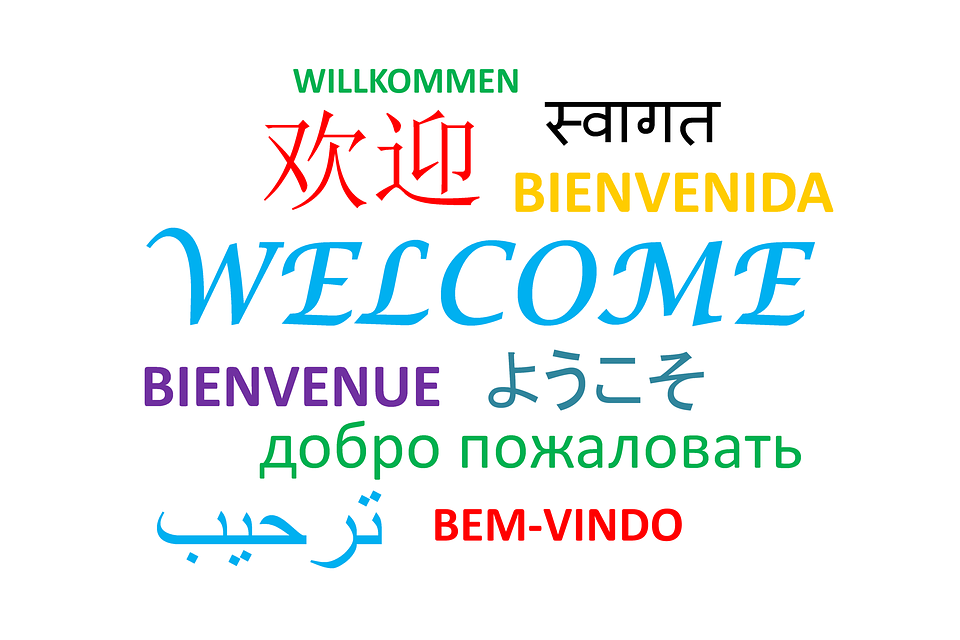
By Sara Faulkner
“This class taught me a lot of things, I have never liked history so much. Because I am an introverted student and have language problems, I cannot say a lot of things I want to tell you. I can clearly memorize every time you care about me, care about a quiet visa student”
Yuyan, Grade 11
Although I began my teaching career as an English Language teacher over 10 years ago, it has been some time since I’ve worked with English Language Learners (ELL). After transferring to a school with a large ELL population, I found myself underprepared for the diversity of learning needs and the challenges that faced many of my students who ranged from those with little or no English background to students who have attained a high level of English competence but still require accommodations to be successful in the History and Social Sciences program.
First and foremost, students needed to know that they mattered. Our Student Success department collects narratives from our ELL students, and one had explained how “It’s embarrassing when you have to ask for help all the time. I can tell by how teachers look they sometimes get annoyed.” As they navigated a new home and school, I wanted every student in my class to know that their well-being was my absolute priority.
Maintaining engagement for teaching students with low levels of English may be challenging. Frustration can easily bubble up in a class when there is direct instruction and students struggle to understand what the teacher is saying, or showing movies without subtitles where the pace of speech is rapid and often academic. I learned quickly that visual films like The Secret Path, or some of the NFB Classics are much easier for students to access and provide compelling starting points for inquiry about Canada’s relations past and present with Indigenous communities or the concept of “Canadian Identity.” After realizing that lists of words and definitions became tedious, I switched to beginning a lesson with a single word, such as “reconciliation” or “identity,” and allowed students to build word banks around these topics and to explore language independently or collaboratively.
I learned after multiple requests to provide all reading materials electronically so students can access translators easily. This put some pressure on me to find versions of readings that were current and easily accessed online, but ended up being a great vetting process as I discarded outdated material and began to summarize dense PDFs into manageable text. I would also precis readings to focus the content – and in doing so realized the benefit of succinct content for all students, not only ELLs. Most English Language Learners are prepared to tackle sophisticated articles as long as they can translate unfamiliar vocabulary.
The task of slimming down the grade 10 History curriculum for a sheltered class was particularly daunting. My solution was to teach content thematically and to confidently embrace a “less is more” philosophy after consulting with our Student Success teacher who supports the ELLs in our school. Rather than tackling the dense curriculum chronologically, I grouped it into themes:
Immigration and Multiculturalism in Canada
Canada at War
First Nations, Metis and Inuit Perspectives in Canada
Continuity and Change: A Canadian Legacy
After the success of the Grade 10 course, I also decided to adopt a thematic approach for Grade 11 American History (almost half the class was composed of ELLs). The freedom to dig deeper into the historical content by slowing down the pace was helpful to all the students.
One of the surprises for me was how quickly many students adapted to inquiry-based tasks and assessment. I was concerned that the “language” of inquiry in addition to the historical language would be challenging. The opposite was true. I would structure tasks around critical questions often pulled from the textbook or TC2 resources. Students found the Canadian Encyclopedia an invaluable resource that worked well with a number of translation tools (and provided an easy starting point for students learning how to use citations in their work). Organizing inquiry tasks into steps helped students to keep their research focused, and freed them from having to locate “the correct answer” to questions, which in turn encouraged them to think critically about their topics.
I decided to use conferencing instead of testing as another strategy to support students. Some students find it challenging to articulate their ideas in writing and when they have the opportunity to both write and speak it provides much richer evidence of learning through conversations and products. While many students are self-conscious speaking English in front of the class, the one-on-one assessment was much less intimidating. Students were encouraged to prepare and use their notes, while I would also prompt and pose questions to keep the conversation moving when necessary. One student expressed how the format allowed her to share all her ideas and to explain her research more thoroughly as written summatives didn’t always capture the depth of her understanding. She also created a powerful visual that provided images and words to guide her narrative as she shared her research.
Finally, I took a big leap of faith and decided to introduce tests and exams that were open-book and online. Rather than creating anxiety about what definitions and concepts to memorize or worrying about “studying the wrong thing” (a fear that plagues all students, not just ELLs) the emphasis of the assessment was on the demonstration of skills applied to a cross-section of content that allowed students to respond to rich inquiry questions and to analyze primary and secondary sources with support. Students were welcomed to ask questions and use any resources they chose. Overall, they were pleased with their performances, felt that the tests and exams were “fair” and it definitely cut down on the paper costs!
“I think it was a good decision to come to Canada. I’ve made friends. They are all from China but some of them only speak English. I enjoy my classes although I don’t like the reading materials. They are difficult even if the topics are good. But my teachers are good to me and care about me so I am happy.”
B.
Sara is a Teacher and Department Head in York Region. She has been a writer/ reviewer for eLearning courses for the Ministry of Education.

